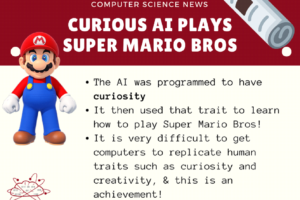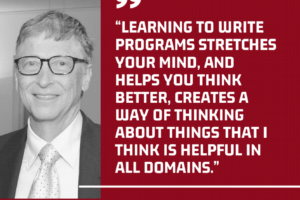Kids and code: a tutor’s perspective.

In embarking on the second year of my teaching journey with Digimaker, I’ve taken some time to reflect on my observations and lessons learnt so far. To preface, I firmly believe that kids are a valuable creative force, and that as our society experiences the proliferation of new technological mediums of creation and education, we must include kids along for the ride. In trying to uphold this ideal in my classes, here are some notes on my experiences…
Most kids are uninformed about their tech.
The first observation I made after I began to teach was that kids are really uninformed when it comes to how all of their devices actually work. Sure, they might be able to get through 90% of the levels on geometry dash, but do they actually understand the mechanisms that allow them to tap on the screen, and receive a response? Do they know how characters in computer games are able to be moved around with our keyboards? And how on earth does a computer keep their score?
You might wonder whether it’s necessary to learn these concepts at all. I’m of the opinion that they are fundamental learnings. We are adolescent when it comes to the sophistication of our technology. The mechanisms behind social media algorithms and some game mechanics such as loot boxes are really flawed, and so long as the generation who grows up with sophisticated tech views it as some magical black box, we won’t be able to change it for the better.
There’s a cool concept called ‘thinking from first principles’. It basically means that if you want to get a really solid and truthful understanding of something, you should start from the very beginning. Want to understand something about electric vehicles? Go alllll the way back to how a combustion engine works, in its most primitive form. Whilst we certainly don’t have the time to do this with everything, this method is really effective for creative thinking, challenging the status quo of how things should work or look, and therefore, change-making.
So to bring it back, including these fundamental concepts allows kids to develop a better relationship to their devices.
Each digimaker lesson focuses on one such fundamental concept, and these are revisited in each programming language learnt to see how it translates. The kids then apply this concept using the activity we outline. Often these applications are in the form of games that they can play afterwards. The excitement of being able to actually interact and enjoy with the thing they have created is palpable, and the learning is really clear when kids begin to add additional functionality to games of their own accord, utilizing previously learnt concepts.
~
Dear kids,
Your iPad isn’t magical, it is just a very clever arrangement of materials thought of and built upon by people no smarter than you.
You’ll make your own ‘magic’ too.
~
Kids as creators, not coders.
Not every child is going to find their passion in computer programming. And that’s totally fine. It’s possible we’ll outsource basic programming tasks to an AI a decade from now anyway.
But every child will likely find their passion in some form of creative expression. Now, creativity is no longer limited to the arts. It’s a way of thinking and smooshing disparate ideas together in new and novel ways. No matter how strange the job market gets in the future with tech disruption, creativity will always be in the hands of humans.
And who best to be creative than kids? Their brains are much more plastic than that of an adult, and they’re all about experimentation. This will become more and more valuable in the coming years.
But what does this have to do with coding? Well, technology is an assistive tool that can support creative endeavors. It gives us some crazy new possibilities in the classroom, and if your child knows how to navigate their device, they’ll have a wealth of opportunity right in their hands.
In a similar vein, computer scientists themselves are beginning to experiment with combining art and creativity with their algorithmic knowledge. And on the other hand, artists are moving into the digital realm to create works no human alone could’ve possibly made. Introducing children to these collaborative and interdisciplinary possibilities is invaluable.
Digimaker encourages this by better familiarizing students with their devices. Not only does their navigation of computers improve by repeating tasks like finding saved files, navigating the web browser, and using commands like copy and paste, we also introduce them to new mediums of expression. We begin with using Scratch. It’s a language developed by MIT that uses visual blocks that connect together like lego. It’s super visual, which kids find very compelling. After this we move on to Small Basic, a computer language that introduces young programmers to text-based code. Next, students use JavaScript to make web pages, and finally we move to Python, which is a very versatile language that I also study at university.
_________
The invention of the silicone chip was one of the most important turning points in the entire history of human endeavor.
Through the digimaker program, we aim to subtly encourages students to engage with these important questions: what exactly is this chip, how does it work, and how can we make use of it, now and into the future?
Written by Emily Painter,
Programming Mentor @ Digimaker



